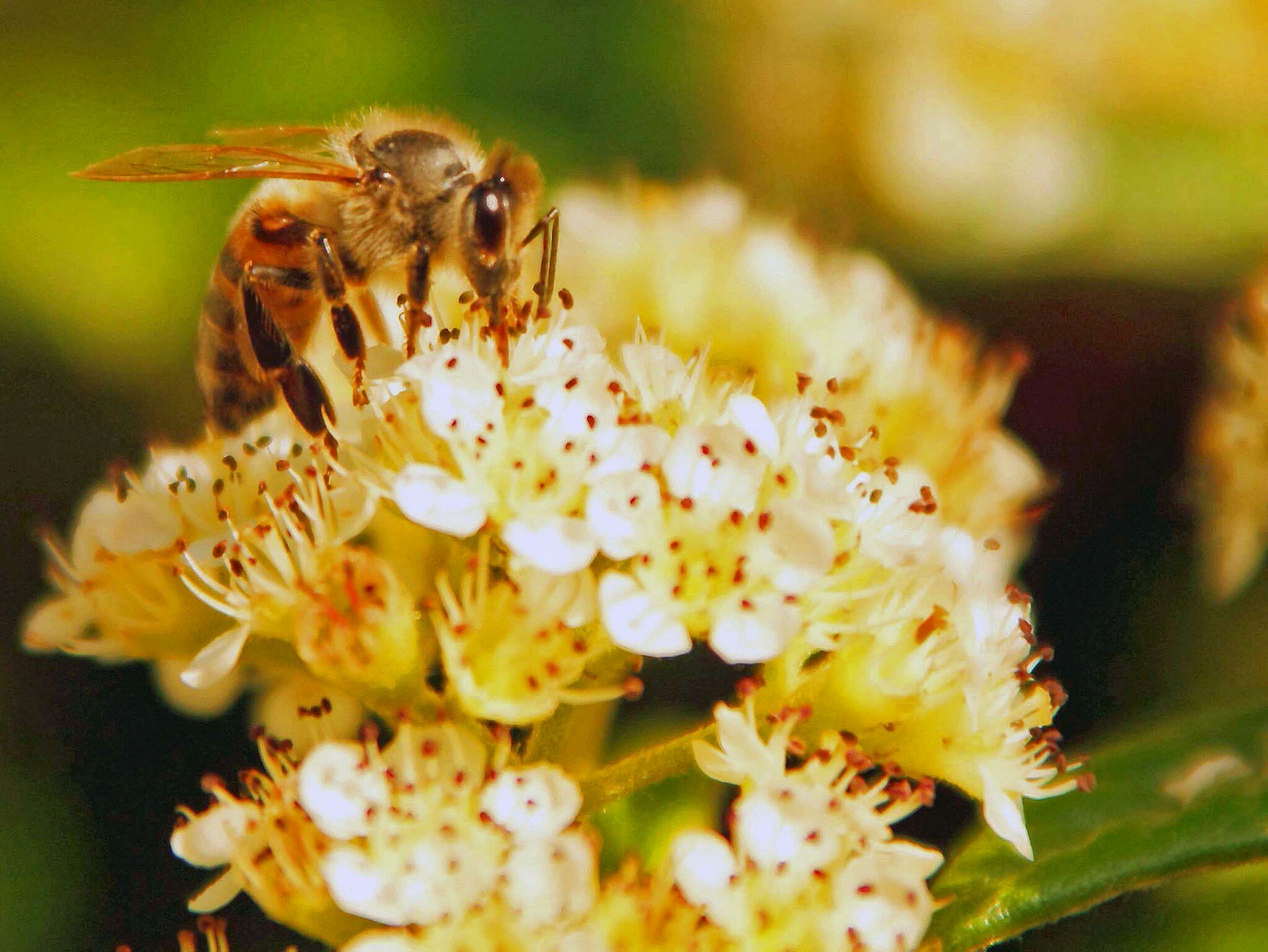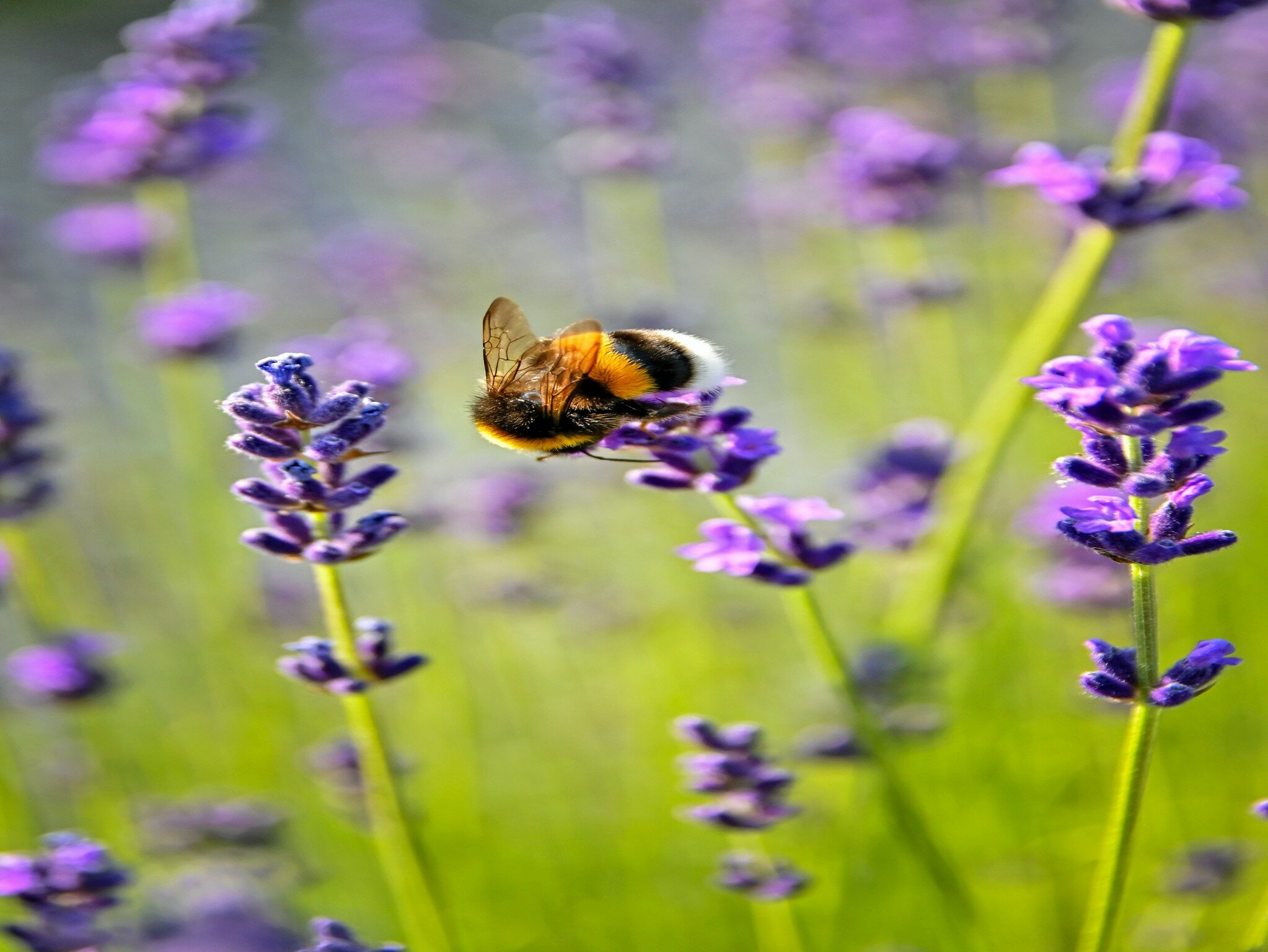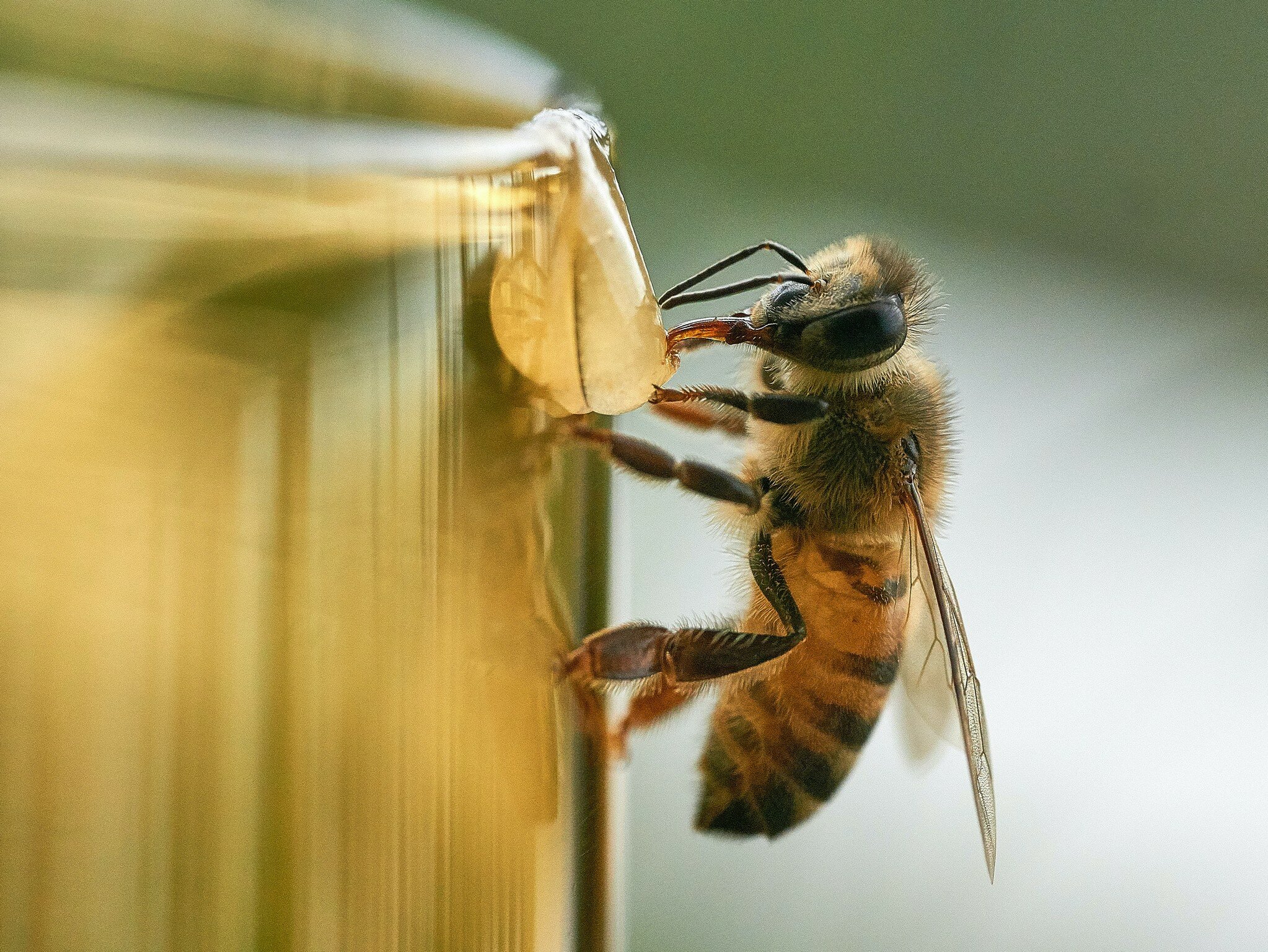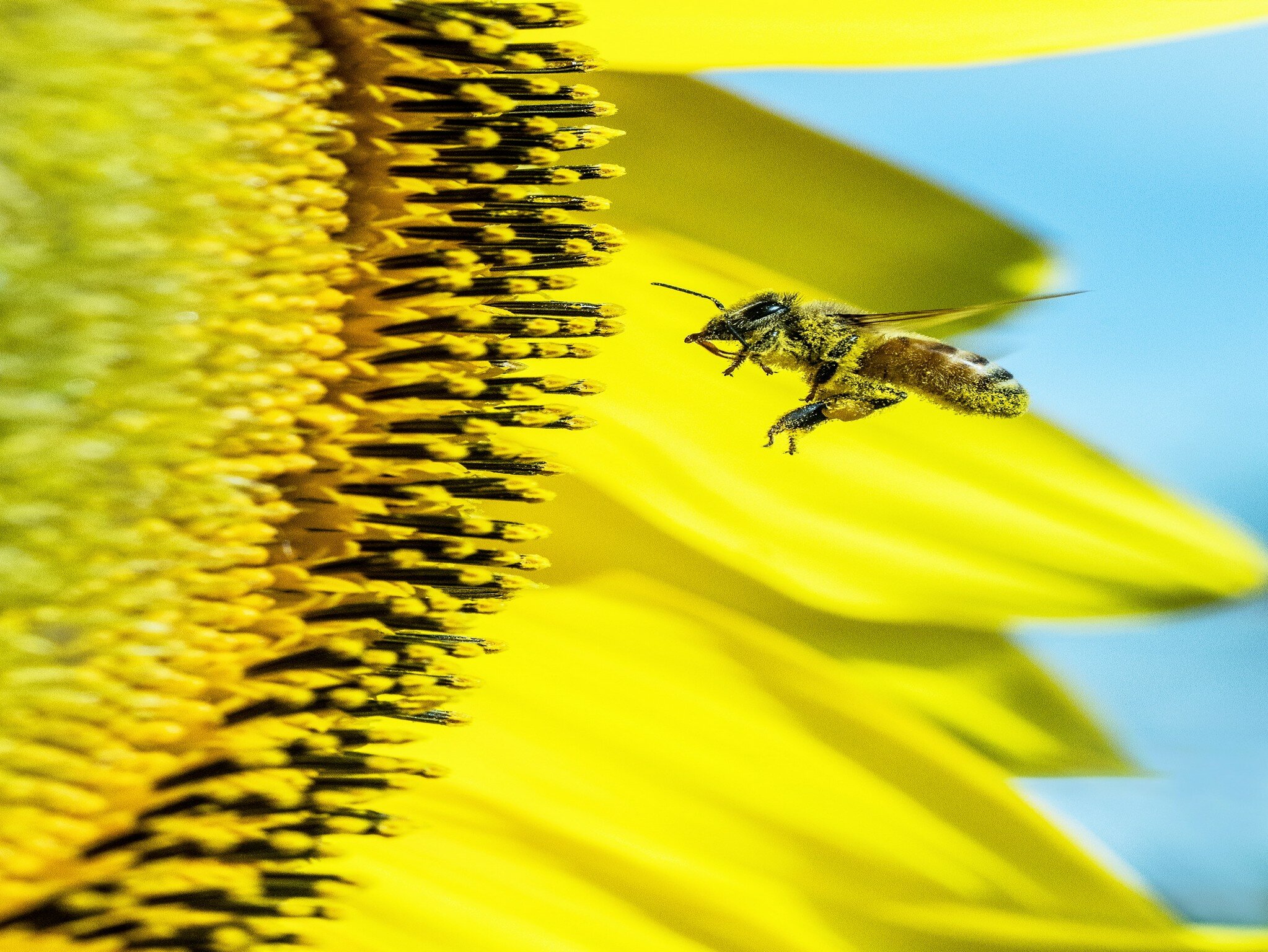
Why should we support bees in Ireland?
-
Irish Food Security: Bees are essential for Ireland's food security as they play a critical role in pollinating crops. Many of the foods we rely on, including vegetables like broccoli, asparagus, cucumbers, and fruits like strawberries, apples, and tomatoes, require bee pollination. Even beverages like coffee depend on bees for production.
-
Biodiversity in Ireland: Bees are vital for maintaining Ireland's biodiversity. They contribute to the balance of local flora and fauna, which is crucial for healthy ecosystems.
-
Challenges Facing Irish Bees: Bees in Ireland are currently facing various threats, including habitat loss, the use of toxic pesticides, and changing climate patterns. It's important to support bee populations to counteract their decline and maintain Ireland's environmental health.
How many Bee species are there in Ireland?
In Ireland, there are approximately 98 species of bees. These can be categorized as follows:
- 1 species of honey bee
- 20 species of bumblebee
- 77 species of solitary bee
Bumblebees and solitary bees, in particular, play a significant role in pollinating gardens and fields throughout Ireland. They are highly efficient pollinators, contributing to the growth of crops and the preservation of Ireland's unique ecosystems.
How Can You Contribute? Establish a Vibrant Bee Haven in Your Irish Garden!
Out of the 98 bee species known in Ieland, your garden can be a welcoming habitat for approximately 20 unique bee species. These bees vary in characteristics:
- Some have long tongues, while others have short ones.
- Some emerge early in spring, while others continue flying late into autumn.
- Some are petite and agile, while others are more robust.
- Some collect pollen on specific body parts, while others cover their entire body.
- Some are fluffy, while others have a smoother appearance.
These distinctions significantly influence a bee's preference for plants and flowers when collecting pollen and nectar. So, when crafting your very own 'buzzing bee café' in your Irish garden, aim for a diverse selection of pollen-rich flowers. These should include various flower shapes and a wide range of flowering periods, spanning from early spring to late summer, and even sustaining through the winter.
It's advisable to avoid double-flowered varieties with numerous petals, as they can be more challenging for bees to access and often offer limited nectar and pollen.
Cultivating bee-friendly plants year-round is a wonderful way to actively support and nurture our precious bee populations in Ireland!


Best Plants to Attract a Diverse Range of Bee Species in Ireland:
Spring:
- Aubretia,Bluebells,Ceanothus,Crocus,Erysimum (Wallflower),Hazel,Hellebore,Crab Apple,Muscari,Primula,Prunus,Pulmonaria,Myosotis (Forget-me-not),Salix,Skimmia,Spring-flowering herbs,Orchard trees such as Apple, Pear, and Cherry
Summer:
- Alcea,Aster,Achillea,Antirrhinum (Snapdragon),Aquilegia,Black-eyed Susans,Borage,Buddleja,Catmint,Ceanothus,Cirsium,Clematis,Cosmos,Campanula,Cornflowers,Dahlia (single flowers),Digitalis,Delphinium,Dicentra,Echinacea,Foxgloves,Fuchsia (hardy),Hollyhocks,Honeysuckle,Lavender,Lilacs,Red valerian,Rosemary,Rudbeckia,Sunflower,Salvia,Scabious,Summer-flowering herbs such as Marjoram and Rosemary,Fruit and vegetables like Broad beans, Strawberries, Raspberries, Tomato, and Peppers
Autumn:
- Anemone,Colchicum,Dahlia (single flowers),Heathers,Ivy,Verbena,Sedum,
Winter:
- Crocus,Snowdrop,Hellebore,Ivy,Lonicera (Winter Honeysuckle),Mahonia,Sarcococca,Viburnum,Winter-flowering clematis
These plant varieties ensure that your garden remains a year-round haven for a diverse range of bee species in Ireland.
Supporting Bees in Ireland: What You Can Do
Provide Shelter for Bees
In Ireland, bees require shelter for rest and hibernation. Consider creating a bee hotel or leaving a part of your garden to rewild, providing them with the shelter they need. Bees also nest in mossy lawns, old masonry, muddy banks, or hollows in trees. It's essential to understand that different bee species have distinct habitat requirements.
Avoid Using Pesticides in Your Garden
Explore natural alternatives to manage pests in your Irish garden. Some bee species, like the Mining bee, reside in the soil in your garden, so it's crucial to refrain from using toxic pesticides both above and below ground. This is equally important for their well-being!
Let a Patch of Your Lawn Flourish
In Ireland, lawn weeds such as dandelions and buttercups serve as excellent bee plants, offering essential pollen early in the season. White clover attracts numerous honeybees, while longer-tongued bumblebees prefer red clover. Why not leave a section of your lawn less frequently mown, allowing these beneficial plants to bloom and provide a valuable food source for bees?

Five common bees you will see in your garden
-
Honey Bee (Apis mellifera):
- Description: Honey bees are about 10-15 millimeters in length with a distinct yellow and brown striped abdomen. They have a fuzzy appearance and are often seen foraging in gardens.
- Habitat: Honey bees typically nest in hives or hollow tree trunks.
- Behavior: These bees are known for their organized social colonies, with workers, drones, and a queen. They are vital pollinators for various plants and crops in Ireland, including fruits and vegetables.
- Note: Honey bees produce honey, beeswax, and royal jelly, and they are among the most well-known bee species globally.
-
Bumblebee (Bombus spp.):
- Description: Bumblebees are robust bees with a hairy appearance, often displaying various color patterns, including black, yellow, and white. They are larger than honey bees.
- Habitat: Bumblebees nest in cavities in the ground, grass tussocks, or even abandoned mouse nests.
- Behavior: Bumblebees are essential pollinators in Irish gardens. They are known for their ability to buzz-pollinate, which helps release pollen from certain flowers like tomatoes.
- Note: There are several species of bumblebees in Ireland, each with unique characteristics and preferences for different types of flowers.
-
Mining Bee (Andrena spp.):
- Description: Mining bees are solitary bees, with various species showcasing a range of sizes and colors. They are often black or brown, with some having bands of white or orange hairs.
- Habitat: These bees nest in underground burrows or tunnels, often near their foraging sites.
- Behavior: Mining bees are excellent pollinators, and they are vital for the ecosystem. They collect nectar and pollen from a wide variety of plants and are responsible for pollinating early spring flowers.
- Note: Different species of mining bees can be found throughout Ireland, each specializing in specific flowers.
-
Carder Bee (Bombus pascuorum):
- Description: The carder bee is a smaller bumblebee with a reddish-brown thorax and a pale or brownish-yellow abdomen.
- Habitat: Carder bees build their nests above ground, often using grass or moss to insulate their nests.
- Behavior: They are effective pollinators and are particularly important for plants like clover and various wildflowers in Irish meadows and gardens.
- Note: The carder bee gets its name from its habit of combing, or "carding," plant fibers to create a lining for its nest.
-
Mason Bee (Osmia spp.):
- Description: Mason bees are small, solitary bees, often metallic blue or black, and are known for their distinctive, cylindrical nests.
- Habitat: They nest in pre-existing cavities such as hollow plant stems or holes in wood.
- Behavior: Mason bees are excellent pollinators and play a critical role in the early spring pollination of fruit trees, especially apple and cherry trees.
- Note: Mason bees are essential for early-season pollination and are gentle and non-aggressive.
These five bee species are commonly found in Irish gardens and contribute to the pollination of various plants, ensuring the health and diversity of the ecosystem.
Plant Guide
We've put together a complimentary and informative guide that identifies which plant types attract specific bee species.
Just click on the image to access the downloadable PDF file.
